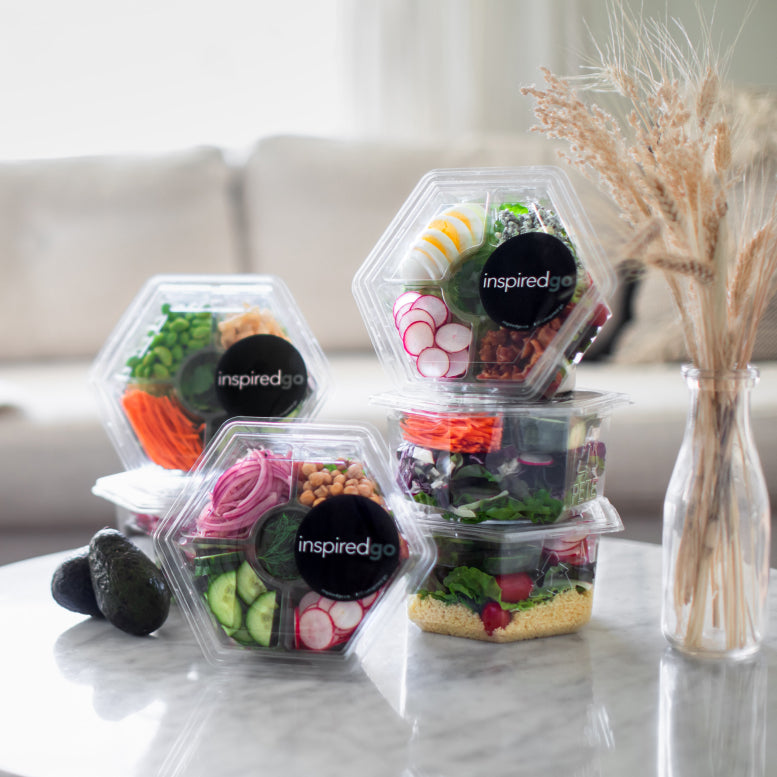What Low Calorie Meal Kits Are Best?
Table of Contents
1. Unveiling the Best Low-Calorie Meal Kits for Healthy Eating
2. How Many Calories Should a Meal Have on a Low-Calorie Plan?
3. How Are Low-Calorie Meals Prepared for Delivery?
4. How Does Inspired Go Make Low-Calorie Eating Easy?
1. Unveiling the Best Low-Calorie Meal Kits for Healthy Eating
In conclusion, the best low-calorie meal kits offer more than just food. They provide a comprehensive solution to healthy eating, making it accessible, enjoyable, and beneficial to both individuals and the community.
Order fresh salads today →


2. How Many Calories Should a Meal Have on a Low-Calorie Plan?
The ideal calorie count for a low-calorie meal depends on individual needs such as activity level, age, gender, and weight management goals. Generally, low-calorie meal plans provide meals ranging between 300 to 500 calories, with salads often being the most effective option due to their nutrient density and natural portion control. These salads combine crisp greens, lean proteins like grilled chicken or chickpeas, and light dressings that deliver flavor without unnecessary calories. Properly designed meals focus on nutrient density rather than strict calorie cutting, ensuring your body gets the fuel it needs to function well. Meal delivery services simplify this by offering pre-calculated salad portions with clear nutritional labeling, removing the need for manual tracking or guesswork. This structure prevents under-eating or nutrient deficiencies that can result from poorly managed calorie restriction.
Choose your salads and schedule delivery →
3. How Are Low-Calorie Meals Prepared for Delivery?
Low-calorie meals are crafted with careful ingredient selection and portion control to ensure they meet specific dietary goals without sacrificing flavor. Many low-calorie options center around fresh salads, packed with crisp greens, vegetables, lean proteins, and whole grains to provide satisfying texture and nutrition. Chefs and dietitians collaborate to design dishes using natural flavors while minimizing added sugars and unhealthy fats. Salads are pre-portioned in controlled kitchen environments to maintain accuracy and consistency in nutrition. They are then sealed in temperature-controlled packaging to retain freshness during delivery and refrigeration. Nutritional information is provided with each meal, giving customers transparency about calorie counts and macronutrient breakdowns. This thoughtful preparation ensures you receive convenient, flavorful salads that align with low-calorie targets.
Get fresh salads and snacks delivered →
4. How Does Inspired Go Make Low-Calorie Eating Easy?
At Inspired Go, we believe healthy eating shouldn’t feel complicated or bland. Our low-calorie salads are crafted by expert chefs and dietitians to provide the perfect balance of flavor, texture, and nutrients while staying within your calorie goals. Each dish combines crisp greens, colorful vegetables, lean proteins, and wholesome grains in thoughtfully portioned servings. We make calorie tracking effortless by providing transparent nutritional information on every salad. Delivered fresh to your home or office, our salads remove the stress of grocery shopping, prepping, and cooking. Whether you’re looking to manage weight or simply eat lighter, Inspired Go makes low-calorie eating fresh, delicious, and completely hassle-free.
Try our fresh, ready-to-eat salads →
Frequently Asked Questions
A meal kit is a subscription-based service that delivers pre-portioned ingredients and recipes to your door, making cooking at home more convenient. Meal kits often include fresh produce, proteins, and spices tailored to a specific recipe, allowing users to prepare meals without the hassle of shopping or measuring. They cater to a variety of diets, such as vegetarian, gluten-free, or keto, and are ideal for busy individuals seeking homemade meals.
The best meal prep service depends on your dietary needs, budget, and convenience preferences. Some services focus on health-conscious options with balanced nutrients, while others provide gourmet recipes or family-sized portions. Key factors include menu variety, quality of ingredients, and delivery flexibility. Reading reviews and exploring trial offers can help you find the best fit for your lifestyle and taste preferences.
Meal prep services typically cost between $8 and $15 per serving, depending on the quality of ingredients and portion sizes. Premium services offering organic or specialty items may charge more. Weekly plans often range from $50 to $150 for 2–4 meals per week. While the cost may exceed grocery shopping, the convenience, reduced food waste, and time saved often make it worthwhile for many households.
Meal prep services save time and effort, eliminating the need for shopping, meal planning, and extensive preparation. They offer portion-controlled meals, helping with weight management and reducing food waste. For those with dietary restrictions, meal prep services provide curated options tailored to specific needs like vegan, gluten-free, or keto diets. This convenience supports healthier eating habits without compromising on taste or variety.
To select the right meal prep service, start by evaluating your dietary needs and budget. Consider services with flexible delivery schedules and customizable menus that align with your preferences. Look for transparent ingredient sourcing, especially if you prioritize organic or sustainable options. Reading customer reviews and testing trial plans can also help you identify a service that meets your quality and convenience expectations.

